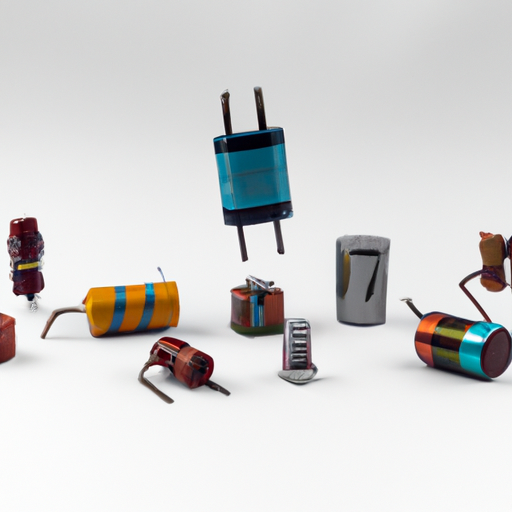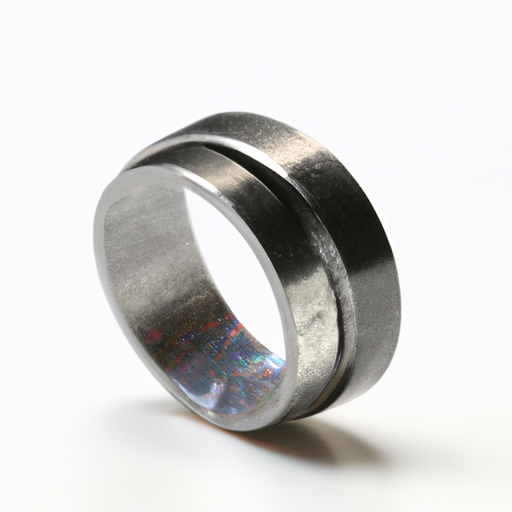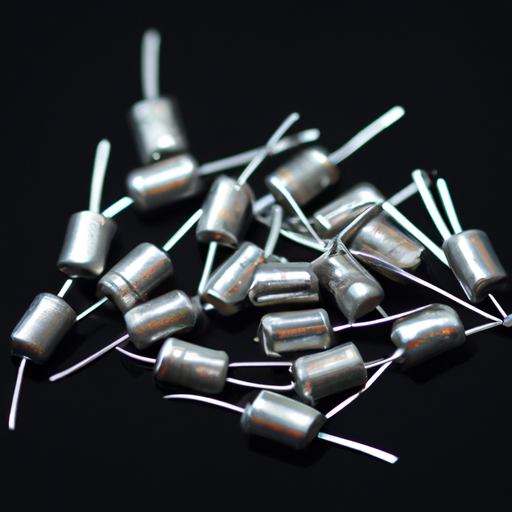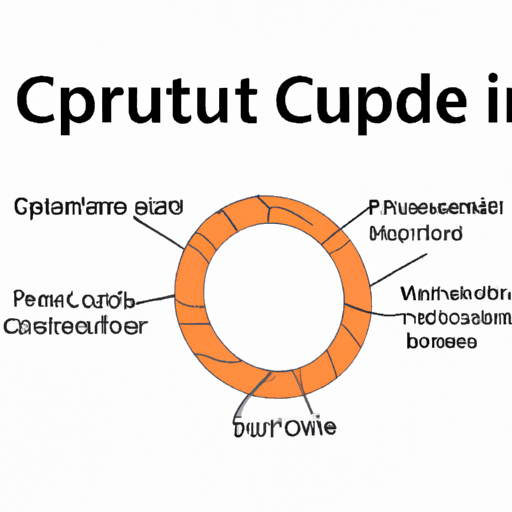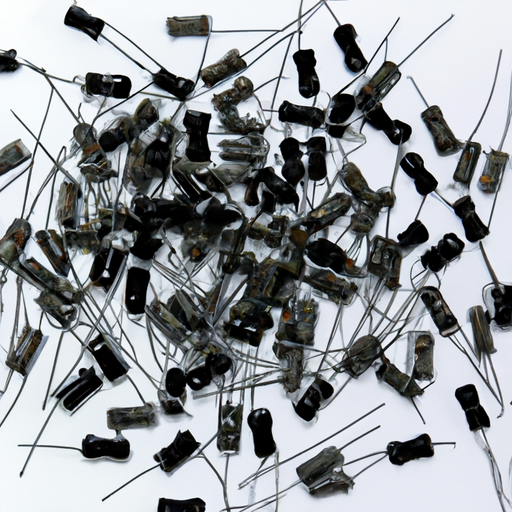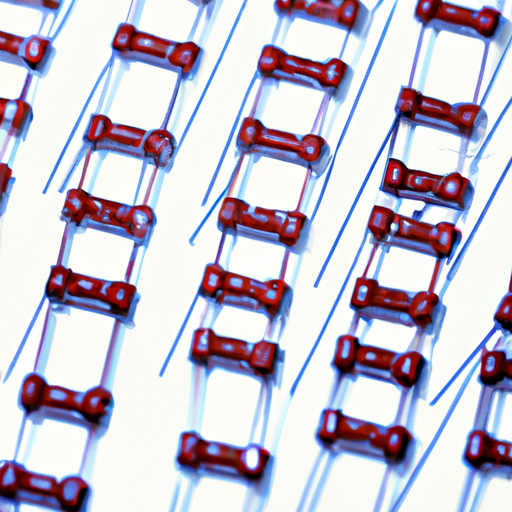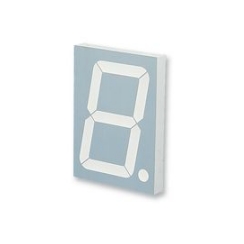What are inductors and inductors?
What are Inductors and Inductors?
I. Introduction
Inductors are fundamental components in electrical engineering, playing a crucial role in various circuits and applications. Defined as passive electrical devices that store energy in a magnetic field when electrical current flows through them, inductors are essential for managing and controlling electrical energy. Their importance cannot be overstated, as they are integral to power supply circuits, radio frequency applications, and signal processing, among others. This article will explore the concept of inductors, their types, how they work, their applications, specifications, design considerations, challenges, and future trends in technology.
II. Understanding Inductance
A. Definition of Inductance
Inductance is the property of an electrical conductor that allows it to store energy in a magnetic field. When current flows through a coil of wire, it generates a magnetic field around it. The ability of this coil to store energy is quantified as inductance, measured in henries (H). The higher the inductance, the more energy the inductor can store.
B. The Role of Magnetic Fields in Inductance
The magnetic field generated by the current in the inductor is crucial for its operation. When the current changes, the magnetic field also changes, inducing a voltage in the opposite direction according to Lenz's Law. This induced voltage opposes the change in current, which is a fundamental characteristic of inductors.
C. The Relationship Between Current, Voltage, and Inductance
The relationship between current (I), voltage (V), and inductance (L) can be described by the formula:
\[ V = L \frac{dI}{dt} \]
This equation illustrates that the voltage across an inductor is proportional to the rate of change of current through it. This relationship is vital for understanding how inductors behave in both AC and DC circuits.
III. Types of Inductors
Inductors come in various types, each designed for specific applications and characteristics.
A. Air-Core Inductors
1. Construction and Characteristics
Air-core inductors consist of a coil of wire wound in the air without any magnetic core. They are characterized by low inductance values and minimal core losses.
2. Applications
These inductors are commonly used in high-frequency applications, such as radio transmitters and receivers, where low losses are essential.
B. Iron-Core Inductors
1. Construction and Characteristics
Iron-core inductors use an iron core to enhance the magnetic field, resulting in higher inductance values. They are more efficient than air-core inductors but can suffer from core losses at high frequencies.
2. Applications
These inductors are widely used in power supply circuits and transformers, where high inductance is required.
C. Ferrite-Core Inductors
1. Construction and Characteristics
Ferrite-core inductors utilize ferrite materials, which have high magnetic permeability and low core losses. They are compact and efficient, making them suitable for high-frequency applications.
2. Applications
Ferrite-core inductors are commonly found in switching power supplies and RF applications.
D. Variable Inductors
1. Definition and Function
Variable inductors allow for the adjustment of inductance values, typically through a movable core or adjustable winding.
2. Applications
These inductors are used in tuning circuits, such as radio receivers, where precise inductance values are necessary.
E. Specialty Inductors
1. Chokes
Chokes are inductors designed to block high-frequency AC signals while allowing DC or low-frequency signals to pass. They are used in power supply circuits to filter out noise.
2. Transformers
Transformers are specialized inductors that transfer electrical energy between two or more circuits through electromagnetic induction. They are essential for voltage conversion in power systems.
IV. How Inductors Work
A. Basic Principles of Operation
Inductors operate on the principle of electromagnetic induction. When current flows through the inductor, it creates a magnetic field. If the current changes, the magnetic field also changes, inducing a voltage that opposes the change in current.
B. The Role of Inductors in AC and DC Circuits
In DC circuits, inductors resist changes in current, leading to a gradual increase or decrease in current flow. In AC circuits, inductors introduce inductive reactance, which affects the phase relationship between voltage and current.
C. Inductive Reactance and Its Significance
Inductive reactance (X_L) is the opposition that an inductor presents to alternating current, calculated using the formula:
\[ X_L = 2\pi f L \]
where \( f \) is the frequency of the AC signal. Inductive reactance increases with frequency, making inductors essential for filtering and tuning applications.
V. Applications of Inductors
Inductors find applications in various fields, including:
A. Power Supply Circuits
Inductors are used in power supplies to smooth out voltage fluctuations and filter out noise, ensuring stable output.
B. Radio Frequency Applications
Inductors are crucial in RF circuits for tuning and filtering signals, enabling clear communication.
C. Signal Processing
In signal processing, inductors help filter unwanted frequencies, allowing for the transmission of clean signals.
D. Energy Storage and Conversion
Inductors store energy in their magnetic fields, making them essential in applications like energy conversion and storage systems.
E. Filtering and Noise Reduction
Inductors are used in various filtering applications to reduce noise and improve signal quality in electronic devices.
VI. Inductor Specifications and Ratings
When selecting inductors, several specifications and ratings are essential:
A. Inductance Value (Measured in Henries)
The inductance value indicates the inductor's ability to store energy. It is a critical factor in determining its suitability for specific applications.
B. Current Rating
The current rating specifies the maximum current the inductor can handle without overheating or saturating.
C. DC Resistance
DC resistance affects the efficiency of the inductor, as higher resistance leads to greater power losses.
D. Quality Factor (Q)
The quality factor (Q) measures the inductor's efficiency, with higher values indicating lower losses and better performance.
E. Saturation Current
Saturation current is the maximum current the inductor can handle before its inductance decreases significantly due to core saturation.
VII. Inductor Design Considerations
Designing inductors involves several considerations:
A. Material Selection
Choosing the right core material is crucial for optimizing inductance and minimizing losses.
B. Core Geometry
The shape and size of the core affect the magnetic field and overall performance of the inductor.
C. Number of Turns and Winding Techniques
The number of turns in the coil and the winding technique influence the inductance value and efficiency.
D. Thermal Management
Effective thermal management is essential to prevent overheating and ensure reliable operation.
VIII. Challenges and Limitations of Inductors
Despite their advantages, inductors face several challenges:
A. Size and Weight Considerations
Inductors can be bulky and heavy, which may limit their use in compact electronic devices.
B. Frequency Response Limitations
Inductors have frequency response limitations, making them less effective at very high frequencies.
C. Core Losses and Efficiency
Core losses can reduce the efficiency of inductors, particularly in high-frequency applications.
D. Parasitic Capacitance
Parasitic capacitance can affect the performance of inductors, especially in high-frequency circuits.
IX. Future Trends in Inductor Technology
The future of inductor technology is promising, with several trends emerging:
A. Advances in Materials and Manufacturing
New materials and manufacturing techniques are being developed to enhance the performance and efficiency of inductors.
B. Miniaturization and Integration with Other Components
As electronic devices become smaller, there is a growing trend toward miniaturizing inductors and integrating them with other components.
C. Emerging Applications in Renewable Energy and Electric Vehicles
Inductors are expected to play a significant role in renewable energy systems and electric vehicles, where efficient energy management is crucial.
X. Conclusion
Inductors are vital components in electrical engineering, with a wide range of applications and significant importance in modern technology. As the field continues to evolve, inductors will play an increasingly critical role in energy management, signal processing, and various emerging technologies. Understanding their principles, types, and applications is essential for anyone involved in electrical engineering and related fields.
XI. References
For further exploration of inductors and inductance, consider the following resources:
1. "The Art of Electronics" by Paul Horowitz and Winfield Hill
2. "Electrical Engineering: Principles and Applications" by Allan R. Hambley
3. Online resources such as IEEE Xplore and educational websites dedicated to electrical engineering.

